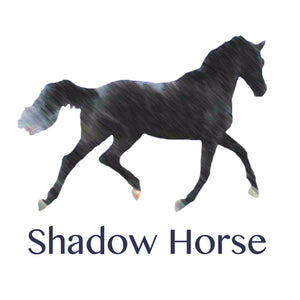Full article text:
SPICE UP YOUR SCHOOLING!
Courtesy of retailer Shadow Horse, international dressage rider Michael Eilberg gives readers his top tips on adding some spice to your everyday schooling…
If you think your flatwork is boring, then the likelihood is that your horse will do to! The key to a happy horse is include plenty of variety in his work, so by introducing some new exercises, you can not only improve your horse’s way of going, but also help develop your riding skills and keep both of you interested!
If your flatwork is becoming dull, then sometimes adding in pole work can help. You can use poles in a variety of ways, to help create more energy and lift or to help lengthen a horse’s stride.
A good exercise is to fan your poles out on a circle and ride more to the inside of the circle for a more collected trot, then more to the outside for longer length strides. This is quite a difficult exercise for the rider too as you have to ride accurately and maintain softness and a good rhythm throughout. This is a great exercise in preparation for your dressage tests and helping the horse develop muscle.
Some riders find that setting poles out in a square helps discipline them into riding more accurately and also helps improve your rider aids, as again this is an exercise which requires control and skill in order to keep your horse within ‘the box’. Lunging your horse over raised poles on a circle can also help create more cadence and lift to your horse’s paces or adding a cross pole can add interest to your lunge work, even if you don’t fancy leaving the ground when sat aboard
Going around and around in circles will be boring, so start to concentrate on riding clear patterns and changing your pace at the markers. For example riding a figure of eight in canter, then walking on the centre line then up into canter will encourage you to ride your horse straight and check if he is listening to your aids!
You can develop this exercise by interspersing trot transitions at each end marker as well and using the shape to ride a series of collected and medium trot or canter depending on your horse’s stage of training. Riding transitions are key to engaging your horse’s hind legs, but as well as direct transitions eg: walk-trot-walk, you can also ride working trot –medium-working trot, again riding lots of transitions, from walk-trot-walk, trot-canter-trot and so on, making sure that your horse ‘jumps off your leg aid’
I probably ride hundreds of transitions when I ride, because it really does help the horse engage his hind leg and create more energy and thus more expression within the paces. A good exercise to ride is to go from working trot to medium trot and back again. Do this all in rising trot if you have any tension in your seat but if your seat is independent, then you can ride working trot in sitting then rise in the medium trot. Think about really ‘opening’ up the trot in the medium, and then using half halts, bringing the horse into working trot again. You can ride these large around the arena or across a serpentine, concentrating on straightness and softness.
Another great exercise is to ride a 10 metre circle in trot in the corner of your arena then ride across the diagonal in medium trot, which helps set up the horse and use the same principle but ask for shoulder-in down the long side.

